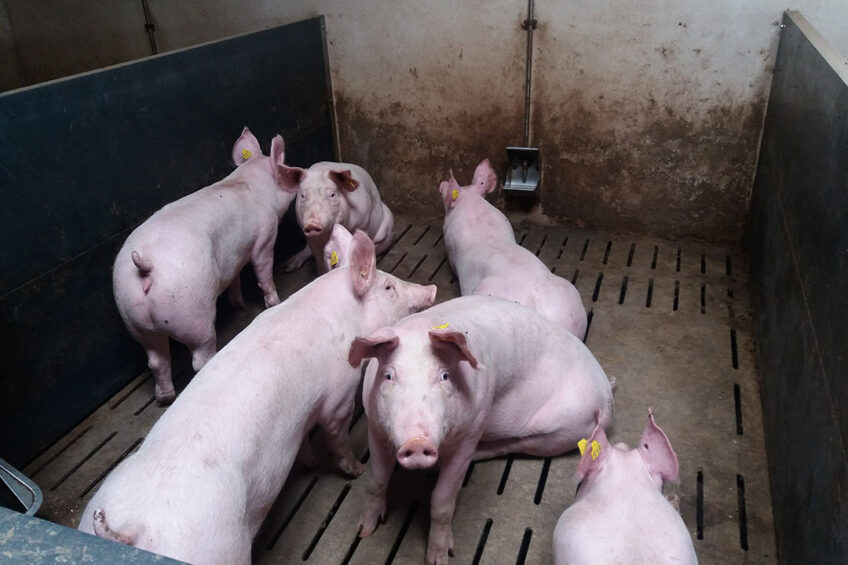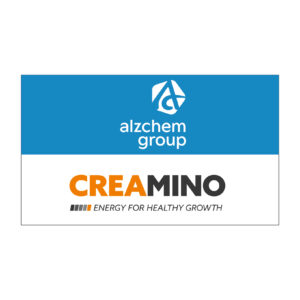Enhancing cellular energy in grower-finisher pigs

In times of high feed costs, improving the creatine status of fattening pigs allows a reduction in dietary energy. Guanidino-acetic acid supplemented to pig feed optimises the creatine status of the cells and enhances cellular energy efficiency.
Creatine plays a central role in cellular energy metabolism by storing and transporting high energy phosphates through the cell. Those phosphates are necessary to regenerate adenosine triphosphate (ATP), the “cellular energy currency” in places where ATP is used to supply energy. Due to its storage function, creatine, or rather the phosphorylated form, phosphocreatine, is similar to a cellular battery pack supplying energy without the need for any substrate-bound (an)aerobic energy production.
Creatine is predominantly found in tissues with high and fluctuating energy demand like skeletal muscle (~95%), but can be detected in most other organs as well (brain, testes, etc.).
Evolutionarily imprinted feeds
As tissues are part of an omnivore’s natural diet, creatine is a metabolite present in their evolutionarily imprinted feeds. Since the usage of animal products is being continuously reduced, and the animal-based components are commonly highly processed, there is hardly any creatine left in modern feeding systems. The animals are therefore forced to synthesise all their creatine endogenously from the amino acids arginine, glycine and methionine.
Supplementing creatine
It has been shown that supplementing creatine or its metabolic precursor guanidino-acetic acid (GAA) to diets of humans or animals can replenish creatine and alter the available creatine pool in the cells, improving physical and zootechnical performance. GAA proved to be the better source of creatine in animal feed as it can better withstand the more aggressive processing measures. The positive performance effects of creatine/GAA are presumably a result of enhancing intracellular energy efficiency by increasing the available (phospho)creatine pool and the subsequent reduced necessity for substrate-based energy provision.
Success in broilers; what about pigs?
Consequently, one of the best established GAA applications in broiler nutrition is to use this increased energy efficiency by reducing dietary energy while maintaining the same performance level. Many scientific and field trials have established an energy equivalence of 0.06% GAA of between 50 and 100 kcal (0.21–0.42 MJ) AMEn per kg final feed in broiler diets.
Increased flexibility in feed formulation
This is a very interesting concept in the current situation of skyrocketing feed and component prices, as it increases flexibility in feed formulation. Raw materials with high energy contribution, such as oil, can be reduced to save feed costs. As the energy contribution of GAA takes place on a cellular level, it is additive to other feed supplements that enhance the digestibility of feed sources such as enzymes or emulsifiers.
The following trial represents the first examination of whether GAA can be used to reduce the net energy (NE) content of a grower-finisher pig diet in the same way.
Materials and methods
The trial was conducted in PigChamp Pro Europe’s trial facility in Segovia, Spain, and comprised 240 healthy pigs (Topigs TN70×Piétrain; weight at the start of the trial 37.9kg, 80 days of age) that were randomly assigned to one of three treatments:
NC: Negative control2,194 kcal (9.21 MJ) NE/kg;
PC: Positive control2,244 kcal (9.42 MJ) NE/kg; and
GAA: Negative control + addition of GAA2,244 kcal (9.42 MJ) NE/kg, including 50 kcal (0.21 MJ)/kg from 0.06% GAA.
The diets were formulated using wheat, wheat middlings, rapeseed meal and soybean meal to contain identical standard ileal digestible (SID) lysine. This resulted in altered SID lysine/NE ratios in the negative control. A 2-phase feeding system was applied with:
phase 1 (grower pigs) from 80 to 115 days of age (17.5% CP); and
phase 2 (finishers) from 115 to 150 days of age (15.0% CP).
At the age of 150 days, the first animals reached the slaughter weight of ~105kg and the trial was concluded.
Compensation for the energy reduction
Table 1 shows the results of zootechnical performance during the experiment. Due to Covid-19 restrictions, only marginal slaughter parameters were accessible and were therefore excluded from evaluation.
Generally, animals cope differently when facing low levels of dietary energy. Logically, a drop in performance (reduced gain) can be one outcome. Alternatively, as the pigs try to eat their energy requirement they might increase feed intake to consume the same amount of energy to reach their genetic growth potential.
Pigs were forced to adapt
The second coping strategy was observed in this trial. All pigs showed similar weight gains and reached similar slaughter weights within the same time.
However, the animals in the NC group had to significantly increase their feed intake to reach the same energy intake and maintain growth at the same level as the other 2 groups. That is a clear indication that dietary energy was reduced to a level that forced the pigs to adapt in the NC group.
Addition of GAA
On the other hand, the animals in both the PC group and the GAA group maintained similar levels of feed intake. The pigs of those groups therefore received comparable energy levels. The addition of GAA must have improved the cellular creatine pool, resulting in enhanced intra-cellular energy efficiency.
That energy contribution reduced the need for currently expensive dietary energy: 0.06% of the product Creamino (AlzChem, Germany) therefore contributed 0.21 MJ or 50 kcal NE/kg of feed in this trial.
Conclusion
This is likely the first trial proving that the well-established poultry application, using GAA to spare dietary energy, could be transferred to fattening pigs. Supplying cellular physiological energy by improving creatine supply to the animals allowed a reduction in dietary energy. Therefore, 0.06% of Creamino could spare 0.21 MJ or 50 kcal NE/kg. Future studies should confirm that finding as well as examine the full energy sparing potential of GAA in grower-finisher pigs.
The application of GAA increases a nutritionist’s flexibility in formulating diets. As components with high energy contents such as oil are very high cost, reducing their inclusion by adding GAA delivers consistent economic benefits when producing grower-finisher pigs.


